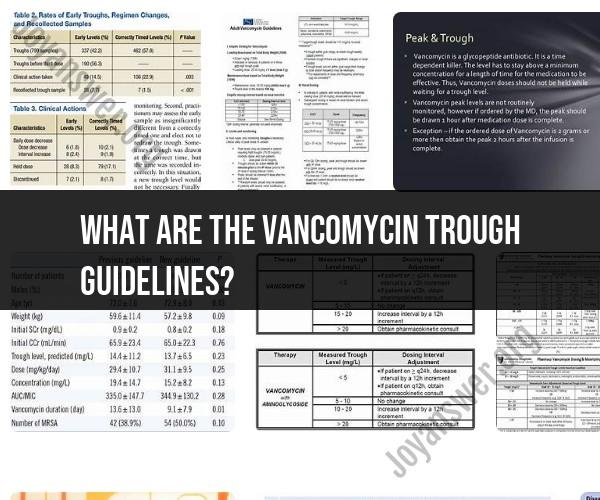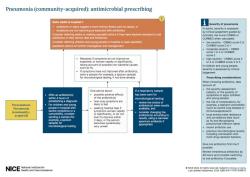What are the vancomycin trough guidelines?
Vancomycin trough guidelines provide recommended target trough concentration ranges for vancomycin therapy in different clinical scenarios. These guidelines are important in antibiotic therapy to help ensure the effectiveness of vancomycin treatment while minimizing the risk of toxicity. It's important to note that specific guidelines may vary slightly between institutions and regions, so it's essential to follow the guidelines provided by your healthcare facility or consult local infectious disease experts. However, here are some general vancomycin trough guidelines:
Serious Infections (e.g., MRSA Infections): For most serious infections caused by susceptible organisms, the recommended target trough concentration is typically in the range of 15 to 20 micrograms per milliliter (mcg/mL). This range is commonly used to achieve therapeutic efficacy against methicillin-resistant Staphylococcus aureus (MRSA) and other Gram-positive bacteria.
Pneumonia: In the case of pneumonia, particularly ventilator-associated pneumonia (VAP) caused by MRSA, guidelines may recommend targeting trough concentrations at the higher end of the range, around 20 mcg/mL.
Endocarditis: In cases of infective endocarditis, especially when caused by MRSA, the target trough concentration may be at the higher end of the range or even slightly above 20 mcg/mL, depending on institutional guidelines.
Meningitis: For central nervous system (CNS) infections, such as bacterial meningitis, vancomycin may require intrathecal administration. Target trough concentrations for CNS infections are often higher and may be specified in the guidelines for the specific infection.
Renal Impairment: In patients with impaired renal function, dose adjustments are often required to avoid excessive drug accumulation and nephrotoxicity. Trough concentration targets may be adjusted based on the patient's renal function, with lower targets for those with reduced kidney function.
Pediatric and Neonatal Patients: Pediatric and neonatal patients may have different dosing and trough concentration targets based on their age, weight, and specific clinical condition. Guidelines for these populations should be followed closely.
Continuous Infusion: In some cases, continuous infusion of vancomycin may be used as an alternative dosing strategy, and trough concentration targets may differ from those used with intermittent dosing.
Consultation: Consider consulting with an infectious disease specialist or clinical pharmacist when determining the appropriate trough concentration targets for specific clinical situations or complex cases.
It's important to remember that trough concentrations are only one aspect of vancomycin therapy monitoring. Clinical response, renal function, and the patient's overall condition should also be closely monitored. Additionally, vancomycin levels should be interpreted in the context of the specific infection, patient characteristics, and local resistance patterns.
Regular therapeutic drug monitoring (TDM) of vancomycin levels is essential to ensure that trough concentrations remain within the desired therapeutic range while minimizing the risk of toxicity. TDM allows for dose adjustments as needed to optimize vancomycin therapy for each patient.













